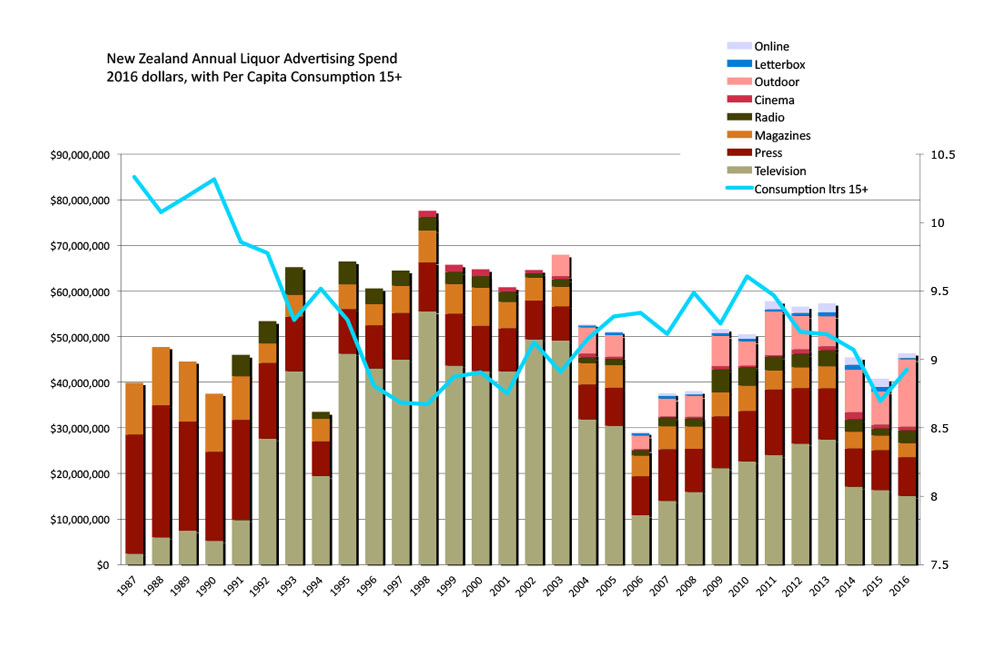There is no correlation between advertising expenditure and alcohol consumption, according to a new study out of the NZ Foundation for Advertising Research.
“We have been gathering NZ data for a number of years and now have a 30-year history of adspend and consumption,” says director Glen Wiggs.
“There has been an ongoing debate between health academics that argue that advertising increases overall demand for the category, and the advertising industry, which contends advertising merely results in brand recognition and shifts market share within the category.”
The graph that accompanies this story uses Nielsen data to measure alcohol adspend over the 30-year period 1987-2016, which is inflation adjusted. Per capita onsumption data is derived from Statistics NZ for all persons aged 15 and over.
“The graph contains some startling facts that destroy some myths,” Wiggs says:
- Consumption was considerably higher prior to 1992 than currently. Prior to 1 February 1992 price and brand advertising of alcohol was banned on radio and TV. Following the removal of the ban consumption declined steadily for several years – a trend that is the reverse of what many health academics predicted. This is attributed to the development of brands that broadcast advertising encouraged. There was a consequent shift from beer being sold in quantity in flagons and jugs, to quality with specialist beers sold in attractive bottles.
- 1998 was the year of the highest adspend and the lowest consumption.
- Newspapers have not lost significant market share to the digital media with little variation in adspend over the past 23 years.
- Although the digital media captured a 37% share of adspend overall its share of alcohol adspend was a miniscule 2.2%.
- Outdoor had its best year by far with alcohol adspend double that of the previous year and only a few dollars behind television.
“To the best of our knowledge this is the only long-term analysis of the relationship between alcohol adspend and consumption in the world,” Wiggs said. “It therefore provides a useful guide to the advertising industry, health academics, media commentators and regulators.”
Share this Post



